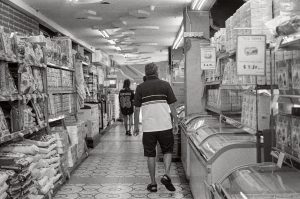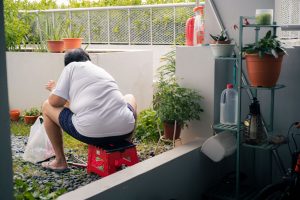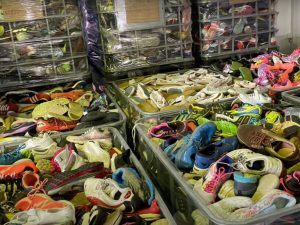Photography by Marisse Caine.
Disclaimer: The focus of this piece will be on crops. There will be no mention of farm animals, fishing, mining, and fighting lava crabs.
For most of us, life often goes something like this: work, eat, sleep, repeat. In this game of life, unfortunately, much of our time is dedicated to the pursuit of money.
Increasingly though, people are seeking meaningful and sustainable careers that go beyond the financial gains.
Lacking the courage to make a career switch into agriculture and the funds required to venture overseas, I resorted to playing Stardew Valley—an idyllic role-playing farming game set in the rural countryside. The premise of the game is simple: A young professional leaves a soulless corporate job to run a dilapidated farm. It mirrors a trend we see in real life (and my inner desires to hit the quit button from city living) too.
Outside of Stardew Valley (and farming video games in general), the agriculture industry is facing technological disruption. In the real world, modern farmers are adopting new tools to achieve greater efficiency and results.
Essentially, all this got me thinking about what it’d be like to be an actual farmer in urban Singapore. Yes, I’m acutely aware that Stardew Valley is merely a fantastical portrayal of rural farming and getting romantically partnered by way of gifts. Using it as a basis for comparison seems almost ludicrous, yet it’s as close as a comparison I can make being a city-bred millennial gamer.
Excited yet sceptical, I found myself in an industrial building in Admiralty, at the doorstep of an indoor farm named Sustenir Agriculture.

Marisse, our photographer, and I were handed a pair of gloves, shoe covers, hairnets and lab suits.
“To enter this farm, we have to suit up”, explains Judy, Sustenir Agriculture’s Head of Brand and Communications and our dedicated guide for the day. This, she says, ensures proper hygiene and cleanliness. As soon as we crossed the entrance, pink LED lights took over our sights.
The farm looked futuristic, with an uncanny resemblance to dystopian, cyberpunk scenery. A bountiful supply of freshly grown kale sat neatly on rigs, lining the walkway. Several people in suits were busy manning the crops.
“Why pink, out of all the colours?” I queried. Apparently, it has something to do with refraction. Named Helios, after the Sun God in Greek mythology, we learned that the lights are specially designed to mimic photosynthesis and optimise yields.
1. Seeding
This is where the magic begins. “Welcome to the nursery, the start of Sustenir’s tight ecosystem.”
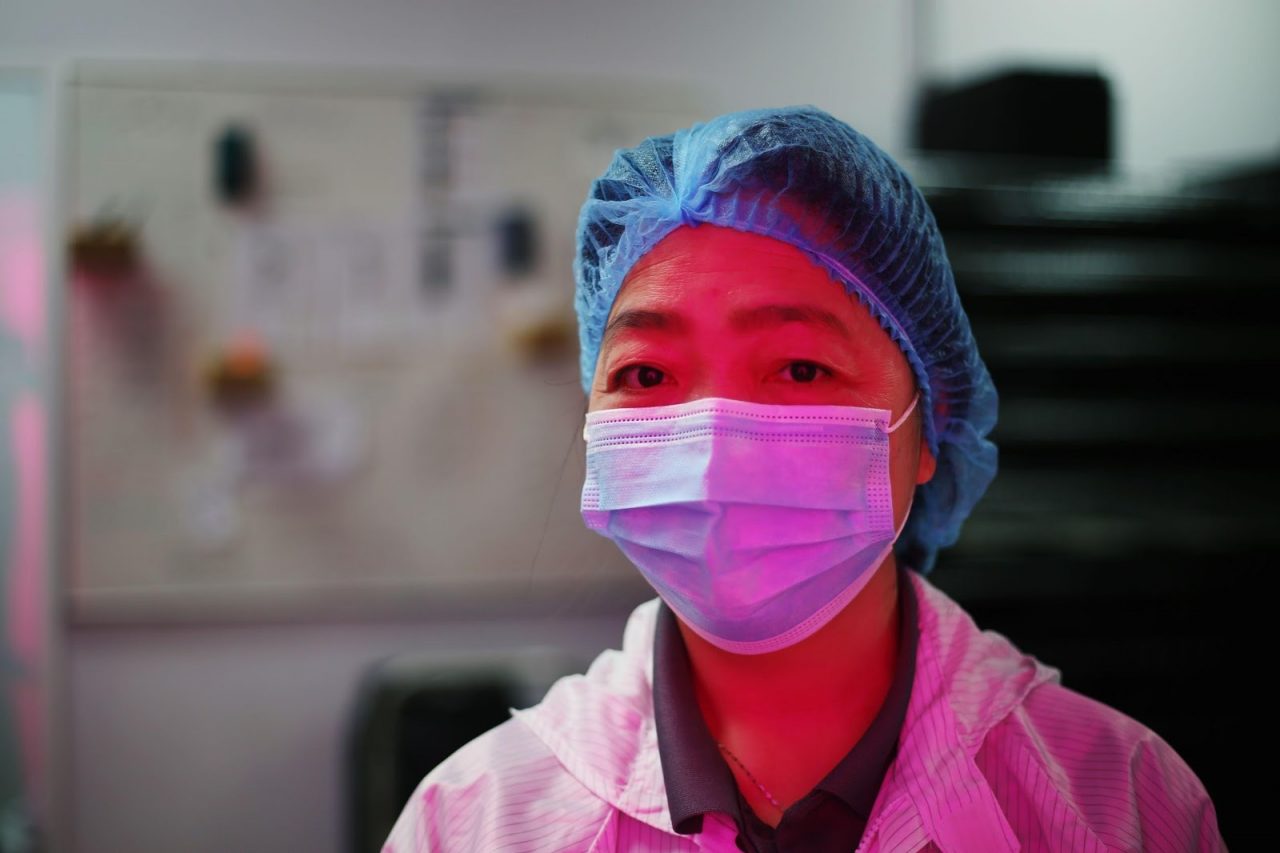
In the nursery room, we met Jaslin — a jovial and humble lady with 6 years of farming experience. She’s the Head of Nursery, one of the key people behind the growth of Sustenir’s greens.
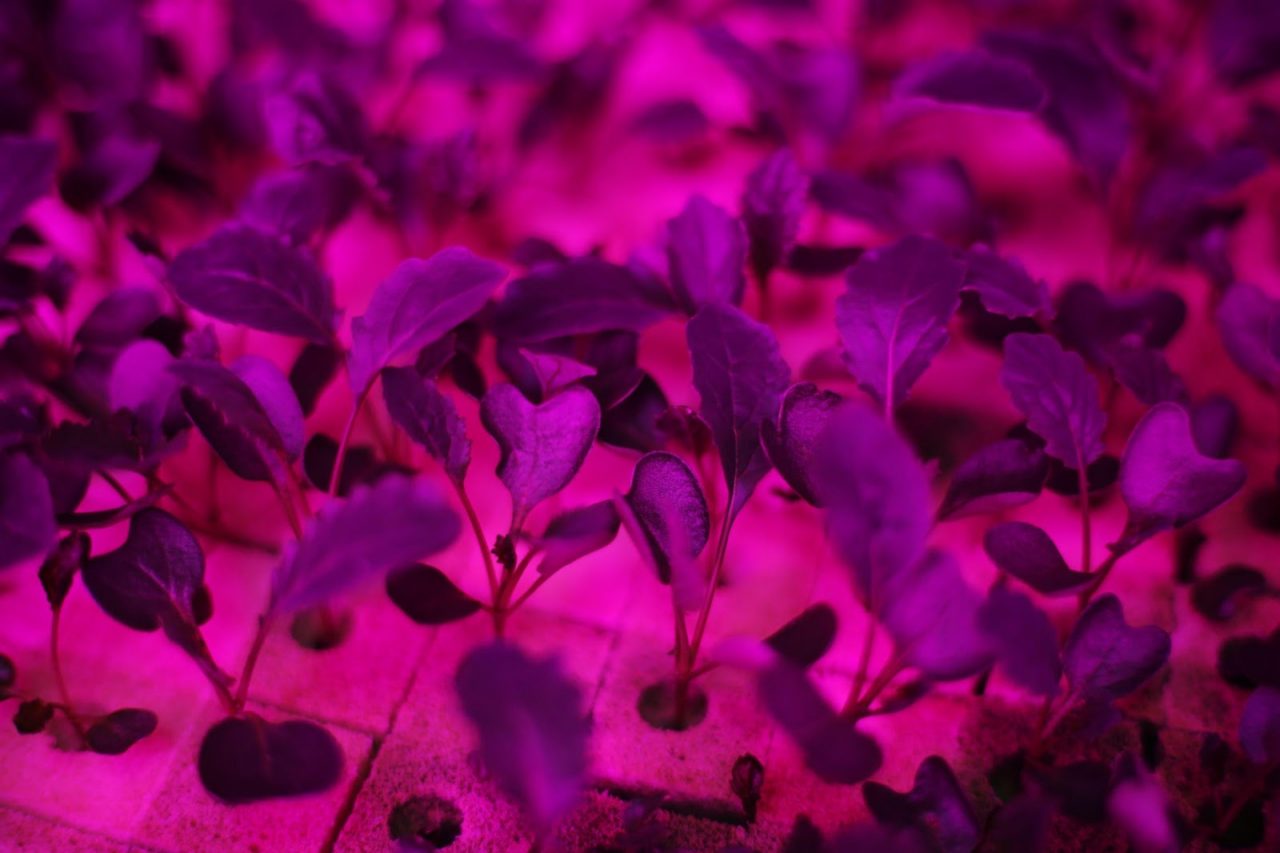
Surrounding us were rows of kale seedlings, sprouting in different sizes and shapes. She monitors these crops every day to ensure that they grow optimally, right from seeding to the germination stage. Pointing to the seemingly endless produce in front of her, Jaslin exclaims triumphantly: “These are my babies. When they look good, I feel good.”
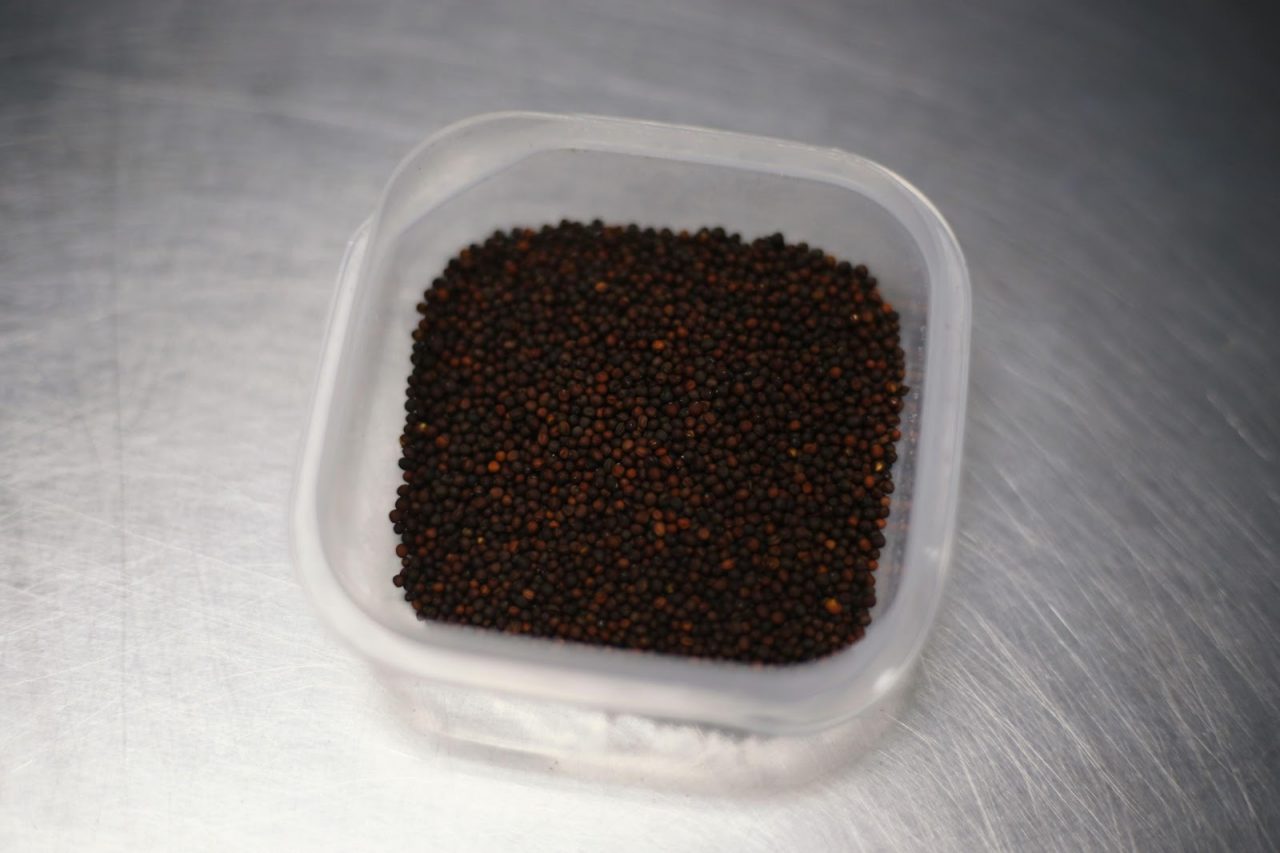
The demonstration of the seeding process began with her moving in a fast but orderly fashion — picking up the tiniest of seeds with a tweezer and planting them into individual foam cubes.
Jaslin tells us that precision is crucial in this line of work. “If two seeds are accidentally placed in a foam cube, they will compete for growth. Overwatering or underwatering can easily affect the growth of crops too.”
When it came our turn to try, of course we failed terribly.
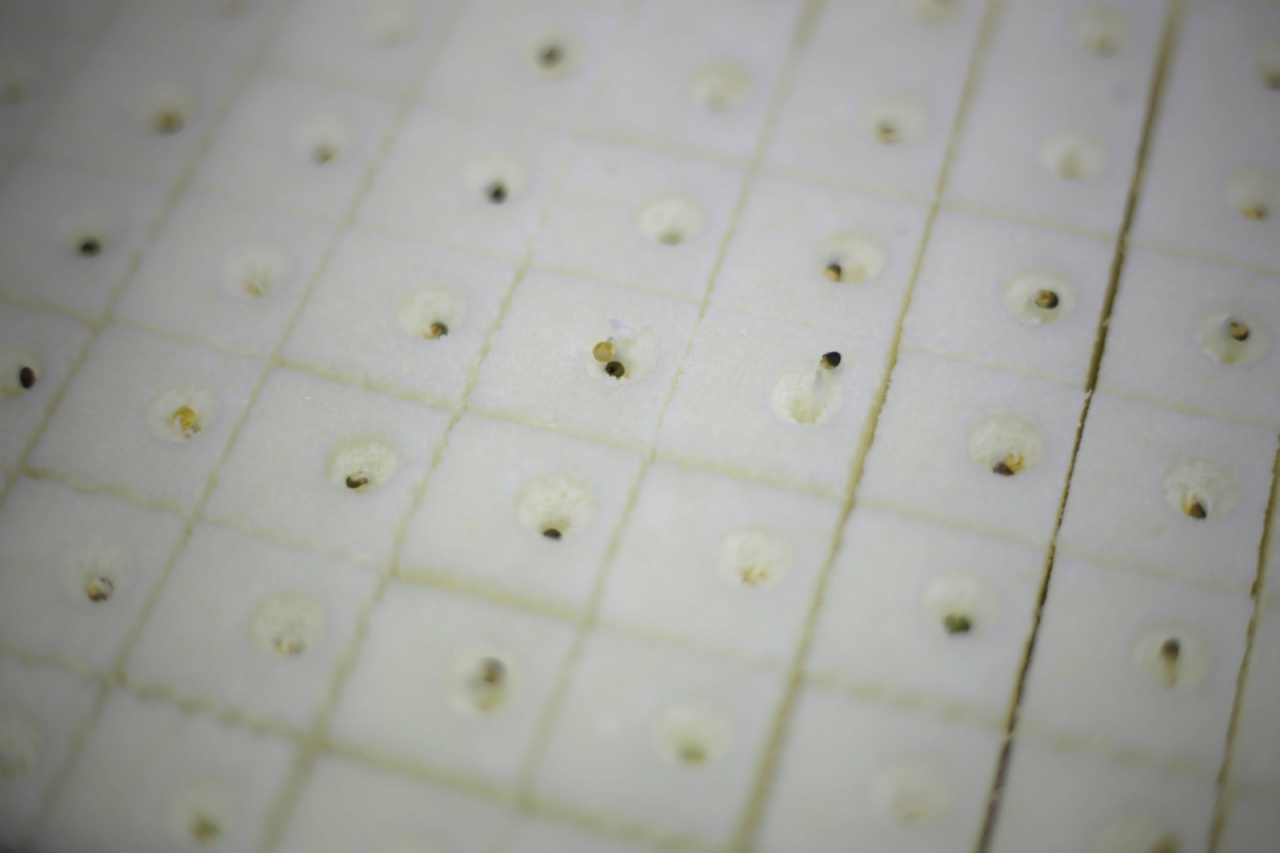
She stresses that the art of farming — like any other art form — boils down to passion. “You need to love what you do. At the end of the day, there is a sense of satisfaction knowing that your hard work goes into feeding Singaporeans.”
Though Stardew Valley might have failed to ring a bell for Jaslin, she points to another farming game: Harvest Moon. It’s one that she avidly played years ago. It made me wonder out loud if gaming was her entry point to experience life as a farmer too. She giggled.
Regardless, it’s reassuring to know that this is the person behind the food that people eat.
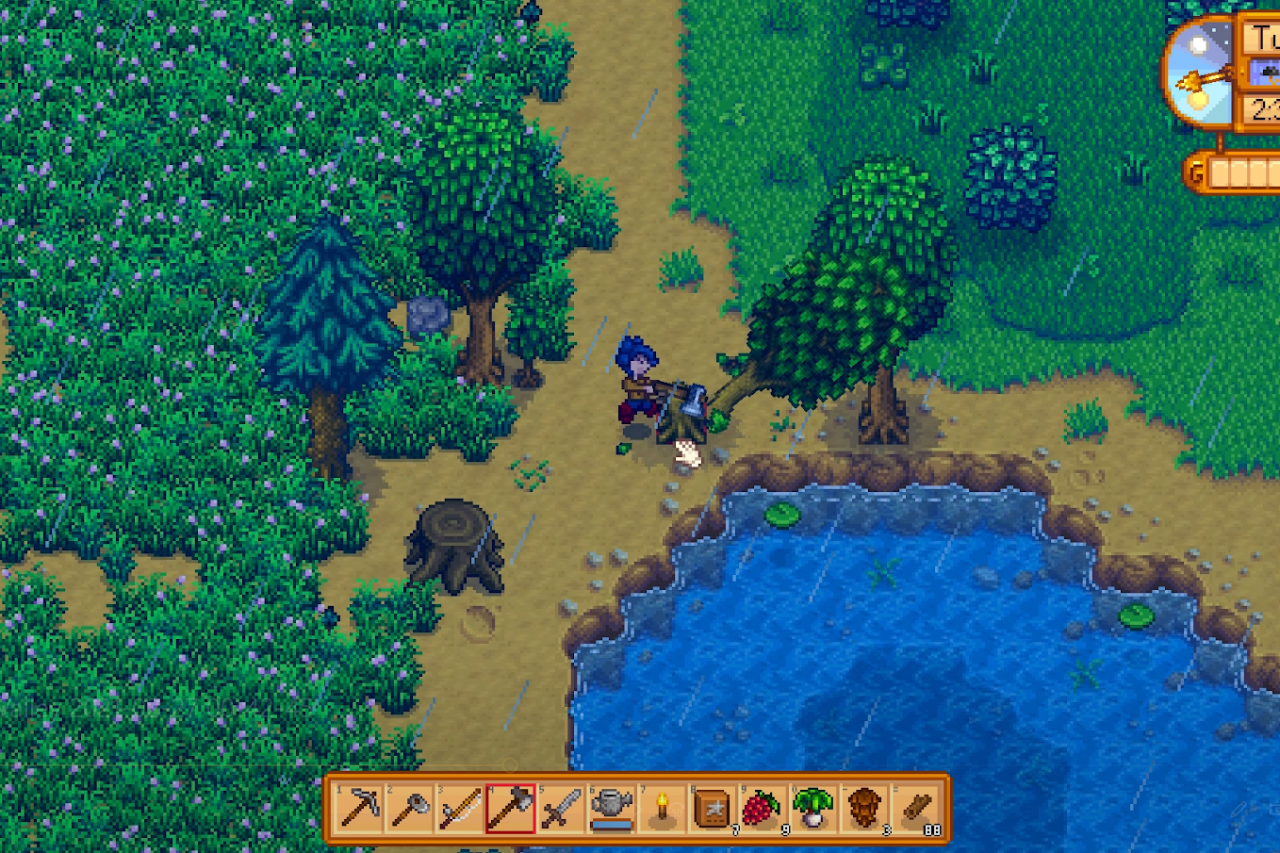
Over in Stardew Valley, the seeding process pales in contrast. You need to chop wood. You need to keep pests and weeds away. You need to shape soil with heavy equipment like hoes and pickaxes. These chores are monotonous and endless.
Farming is so often romanticised in my head. This pastoral ideal glorifies a time of the past, as though it isn’t tough work in real life. Let’s be honest: traditional farming, for me, is only feasible through a screen—I am merely a slightly underweight female lacking in physical strength and mental will.
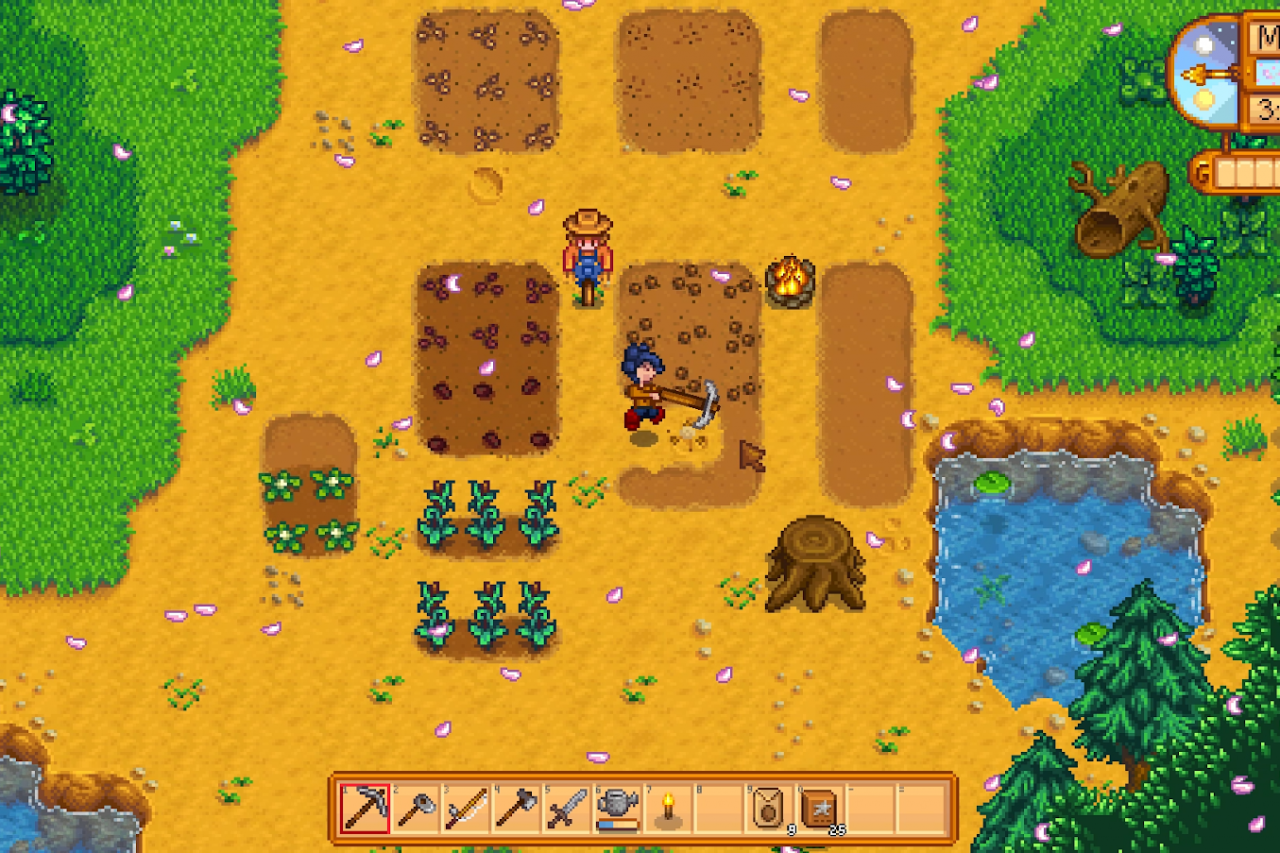
Being in a controlled environment, Sustenir is not limited to the size of the land. Neither is there a need for the wanton massacring of trees, like in Stardew Valley. On the contrary, their crops are arranged in a linear and vertical manner. This means that greens can be grown in any number of rooms across many floors. It might sound odd, but Sustenir currently produces fresh vegetables across three levels of an industrial building.
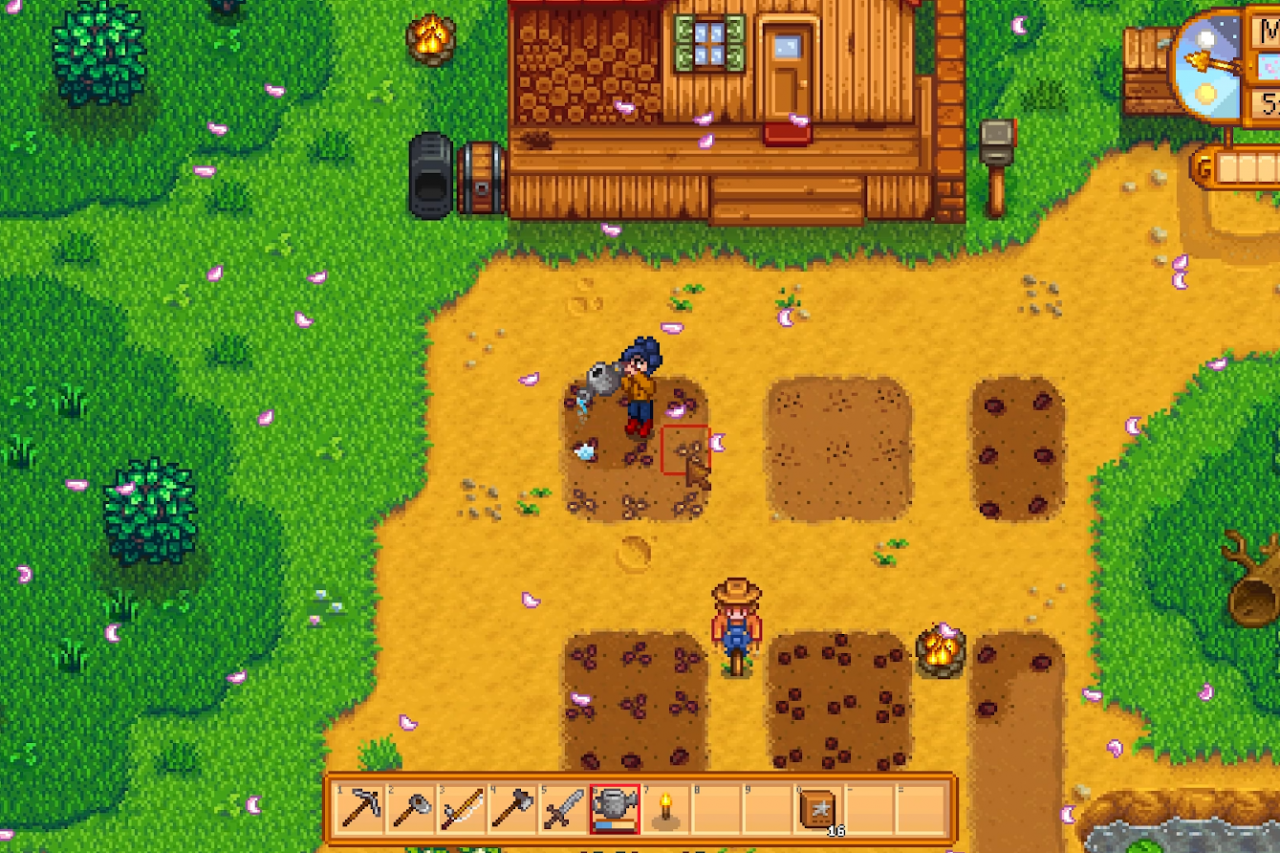
In the early part of Stardew Valley when you’re still a noob farmer, watering crops is a time-consuming and dreaded chore. Beneath the game’s cute graphics is a solemn reminder that farming can be far from relaxing.
Without any upgraded tools in-game, a basic watering can is limited to hydrating a single square of crop at once. This easily drains the player’s time and energy. Funny how it kinda mirrors what we were doing at Sustenir, sans the physical exhaustion.
The pain of manually watering each plant is virtually nonexistent in Sustenir, which adopts the Nutrient Film Technique (NFT) — a closed-loop, hydroponic system to keep their plants hydrated. This uses 95% less water to deliver nutrients to the root of plants. Through several experiments, they’ve also found the best water pH level used for the initial seeding; this helps to obtain the highest rate of germination.
Though they never revealed what goes into the water (“trade secret,” they winked) it only goes to show how science, research and technology has reshaped what it means to be a farmer today.
II. Harvest
By the time crops reach the grow room, they’re mostly ready for harvest — an indication that previous efforts and patience have paid off.
In this section, we met Marvin. Affectionately known as one of the “grow boys,” Judy tells us that he’s one of the busiest people on the farm. Swift and efficient, he physically harvests a great deal of kale everyday.
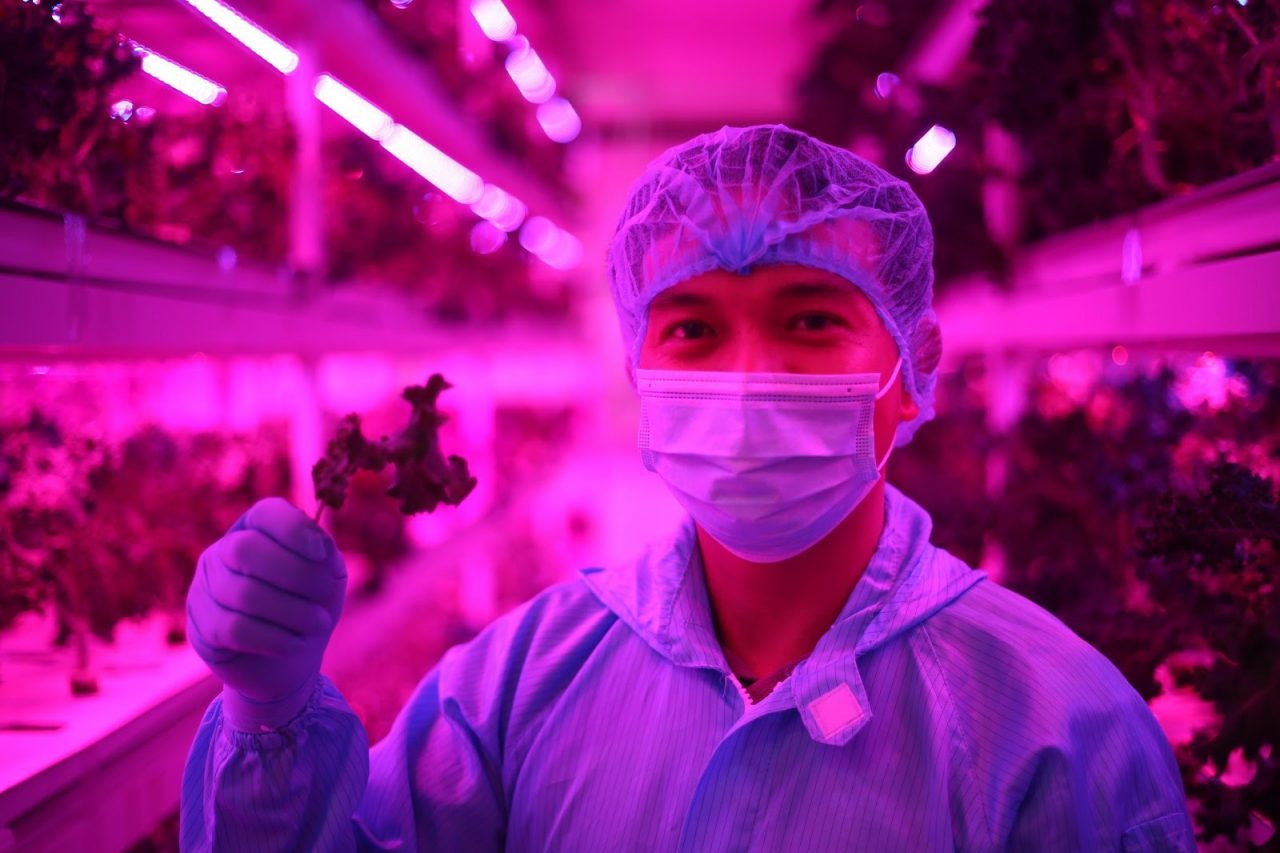
Interestingly, Marvin worked on an open field farm back in the Philippines and only made the switch to urban farming several years ago. Between the two, he much prefers the latter. For obvious reasons.
“Here, there are no pests. Without the use of chemicals like pesticides, crops are cleaner and fresher. Plus, I get to upgrade my knowledge and work with new kinds of technology,” he beamed.

Pulling out a ceramic knife, he carefully slices off a piece of curly kale for us to taste. The massive leaf was vividly green, curly on the edges and non-waxy to touch; what Judy calls an “A Grade” crop. The flavour profile starkly contrasted against most kale I’ve tasted before. Crunchy, sweet with a nutty finish. Indisputably tasty. Our verdict: It’s as fresh as it gets.
“This sounds cheesy but it almost melts in your mouth,” Marisse exclaims, nearly forgetting to snap a picture of the leaf.
They grow two varieties of kale – the Toscano kale that is best paired with red meat, and curly kale that is best paired with white meat. Being a superfood, these vegetables are wildly high in nutrients like manganese and vitamin C. King of greens, as they call it.
Should Singapore’s food supply be disrupted one day, it’s great to know that at least there are these highly-nutritious crops to rely on.

Needless to say, harvesting should be the most satisfying stage—it’s where farmers finally get to reap what was sowed, after all. At this point, it became astoundingly clear that no video game can ever deliver the same sense of satisfaction. How can a few clicks of a mouse ever match up? Although there is considerable work involved in tidying and harvesting, it is impossible for the avatar to get injured — if I had to cover that much ground under the Singapore sun in real life, I’d be in shambles.
The biggest irony is that I’m doing all this in the comfort of my air-conditioned room, without breaking a single sweat. It’s an attempt to mimic real life but it’s simply not the same. Most of us tend to liken farming to a simple, straightforward activity. That’s far from the truth, especially if they’re meant to feed the masses.

Plus, in Stardew Valley, certain crops only grow in designated seasons. A summer crop like melon, for instance, will wither by the time autumn rolls around. Imagine the pain of waiting around just for the right season to come by. Being so interdependent with nature also means the passive acceptance of fate — sorry, but earth says no tomatoes allowed in spring!
Technically, it should be impossible to grow winter crops in Singapore due to the tropical climate. Yet, urban farms like Sustenir have been able to calibrate variables like air, humidity and temperature to grow non-native crops all year round. This explains their continuous production of kale, lettuce, ice plant and rocket — greens that typically thrive in cold weather conditions.
According to Marvin, a lot of detail and focus goes into each plant. With a shrug, he clarifies: “Rarely do perfect yields just emerge. Before and after harvesting, we conduct quality checks and come up with hypotheses to ensure consistency and to further improve.
III. Post-harvest

We stepped out of the pink glow and into a room with regular, fluorescent lights. A pop tune on the radio was playing in the background. Dozens of people stood in their respective stations, chatting whilst moving in a steady rhythm.
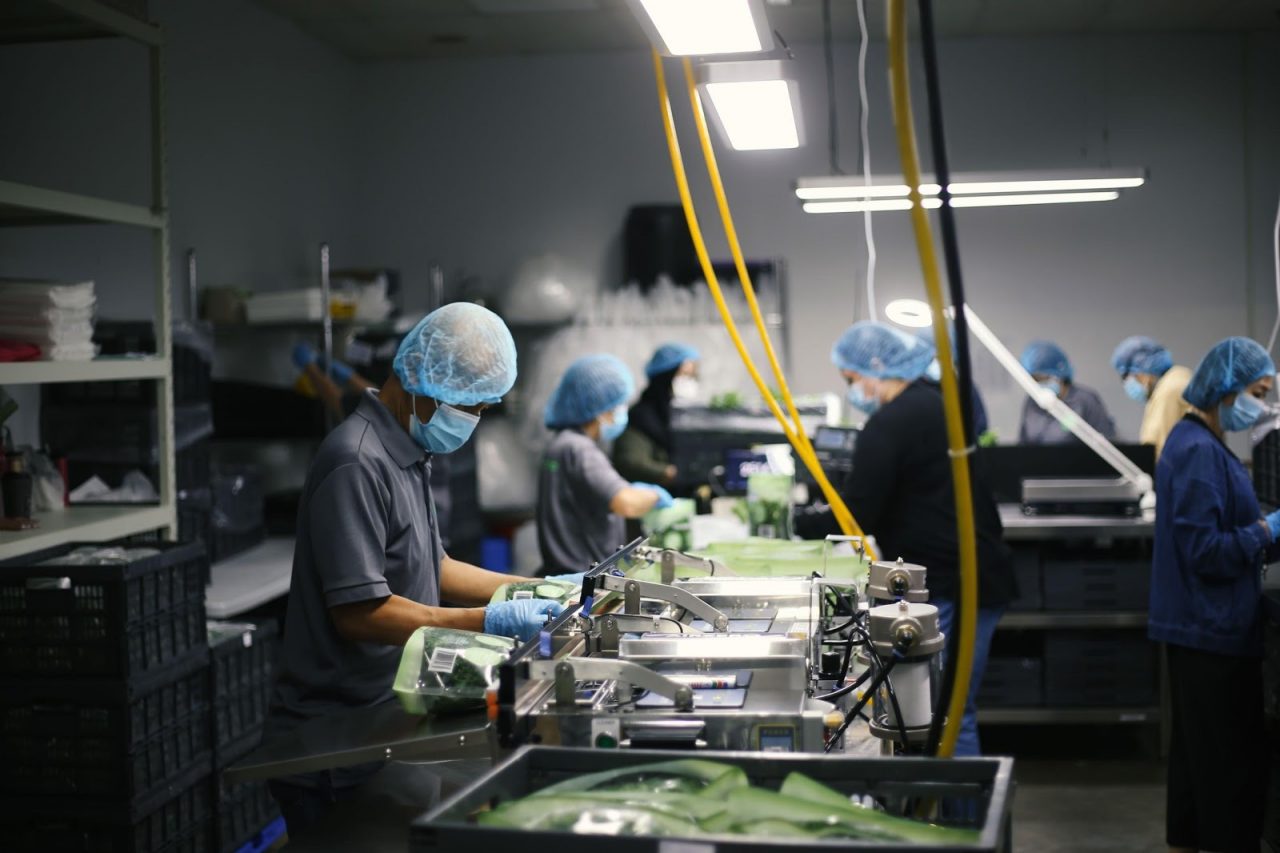
Some weighed and sorted through produce, while others packed them in bags with the help of machines. It dawned on me that the post-harvest room completes the “tight ecosystem” that Judy mentioned at the start of our visit. It’s clear that every person has a role to play.

Judy tells us that Sustenir produces 90 tonnes of greens a year, all of which gets distributed across various supermarkets in Singapore. Not all crops make it into bags — smaller ones are used for pestos and juices as a way to reduce food waste.

In the post-harvest room, we met Louis, a soft-spoken 27-year-old farm supervisor. He oversees all processes and ensures that orders are sent out in a timely manner.
“Farming is still a novel profession in Singapore. I was studying industrial design before this but wanted something more rewarding with my career. The industry is still relatively new. So who knows? Maybe I will be designing my own farm rig in the future.”
Having worked across several industries from advertising to fintech, Judy, like Louis, made the plunge into farming a couple of months back. She tells us nothing feels quite as urgent and direct.
“People joke about quitting their jobs to join farming,” she laughs. “I am one of those people who made it happen.”
Urban farms might be taking off in Singapore, but there is still a long way to go. Even so, there is hope. “Young people seek a deeper connection with their food,” Judy adds, “They find comfort knowing where it comes from.”
“Apart from operational work, some contribute to our Research & Development team. Being a relatively young sector, there are tonnes of opportunities.”

What about post-harvest in Stardew Valley? Ultimately, the game is really about maximising crop production and nothing more. More harvests, more money; more money, more problems upgrades. Soon enough, you’ll find yourself with more money than things to spend on (yes, too much money can be a thing). That’s as far as it goes. Over time, the crops slowly lose their meaning. Needless to say, the game fails to deliver the same joy experienced by those at Sustenir — the joy of enjoying freshly-grown harvest, and the joy derived when people choose to #supportlocal.
In retrospect, it’s clear that the game ignores larger issues; like how agrarianism is a threat to the environment, for example. It is highly disconnected from debates on pesticide use, pollution and sustainability — all things that matter to youths today.
As the world evolves, so does agriculture. It no longer equates to plain laborious work under the hot sun. Rather, there is a shift towards precision farming that involves data, science and technology.
Granted, farming in high-rise buildings is not the solution to feeding the entire nation. But it has much to offer in the wake of a pandemic, especially after last year’s embarrassing panic buying saga. To boost food security, Singapore aims to produce 30% of its nutritional needs by 2030 with the 30×30 plan.
My idea of farming was pathetically confined before this trip. Hunkered down in my home with the game flashing across my screen again, this time there is comfort in knowing that there is no need to virtualise the good life. There is always the option for us to ditch plain office clothes in exchange for a lab suit in modern farm life.

The people I met in Sustenir proved that it’s possible to make farming a profession despite having minimal farming skills at the initial stage. In fact, they’ve all expanded their knowledge with time. It’s a reflection of the game, where farming attributes are gradually leveled up with sufficient experience points.
With more urban farming courses and job opportunities available today, things are certainly looking up for younger folks. As the local industry continues to grow, perhaps we’ll start hearing kids aspiring to be a farmer when they grow up. Considering it won’t be the same back-breaking experience faced by my digital avatar in Stardew Valley, that’s not a bad thing.
This article is brought to you by Singapore Food Agency (SFA), in collaboration with Sustenir Agriculture.
If you haven’t already, stay updated with RICE on Instagram, Spotify, Facebook, and Telegram.
Ever tasted locally produced food? Why or why not? Share your thoughts with us at community@ricemedia.co.



